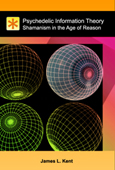
References
Anticholinergic drug-induced sleep-like EEG pattern in man
Itil TM; Psychopharmacologia. 1969;14(5):383-93.
Clinical, quantitative, and qualitative EEG investigations were carried out in a group of psychotic subjects with the anticholinergic drugs Ditran and atropine sulfate. Both anticholinergics induced, in relatively ldquolowrdquo dosages (Ditran, 0.005–0.05 mg/kg, and atropine, 0.04–0.30 mg/kg), drowsiness-like EEG patterns with low voltage slow waves and superimposed fast activity. These EEG changes correlated clinically with fluctuations of consciousness and subdelirious behavior. The clinical and EEG characteristics of the drowsiness-like stage after anticholinergics were different from those seen during spontaneous drowsiness.
After high dosages of Ditran and atropine (Ditran, 0.05–0.30 mg/kg, and atropine, 0.30–0.50 mg/kg), high voltage slow waves and spindle patterns were seen in the EEG of some subjects. Patients exhibited marked impairment of consciousness, sleep-like behavior, and sometimes coma-like states. The anticholinergic-induced sleep-like state differed significantly both clinically and electroencephalographically from chlorpromazine-induced sleep, thiopental sleep, and spontaneous daytime sleep.
These investigations indicate that anticholinergic-induced sleep-like states represent entirely different stages of vigilance and consciousness than those of natural drowsiness and sleep.
Web Resource: www.springerlink.com
Keywords: anticholinergics, EEG
|
This reference is included in the following Listings: |
